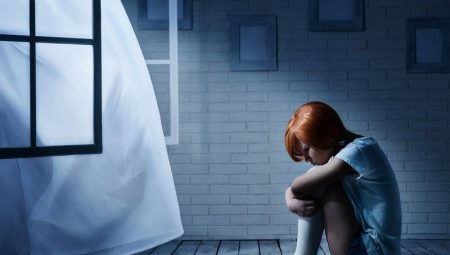Fears are different. What one person fears may seem ridiculous and absurd to another, but this does not in the least diminish the very fact of fear. The list of phobias known to science and sufficiently studied by modern psychiatry has more than a hundred names, and each of them has a certain fear that can change a person’s life beyond recognition.

Theme of species
Phobia is called a symptom that is an unexplained and irrational fear of something. A person usually cannot control this emotion. Phobias are very stable, they can haunt a person from childhood to old age. People suffering from some kind of phobic mental disorders try their best to avoid situations and circumstances that cause them great anxiety. As a rule, they are well aware of the far-fetched and even absurdity of their fear, but they cannot do anything with it.
Phobias manifest high levels of anxiety, loss of self-control, panic attacks, and sometimes loss of consciousness. Understanding that a person cannot control his horror, he often makes the decision to leave a potentially dangerous situation. So people become voluntary recluses (for fear of the street, fear of leaving home), sociophobes (for fear of communicating with people, for fear of being misunderstood, unacceptable). People with certain phobias cannot create families, find a normal job, travel, enjoy life.Fears significantly limit human capabilities.
It is believed that almost 70% of the world's population have certain types of phobic disorders, while specific phobias occur in about 8-10% of cases. Most of those with phobias live, according to statistics, in Europe and in the Western world, only 4% are Asians, Africans and Latinos. According to existing WHO data, women tend to suffer from different nightmares about twice as often as men.
The vast majority of phobias start for the first time at the age of puberty, that is, from 10 years old. With age, the number of patients with phobias decreases.
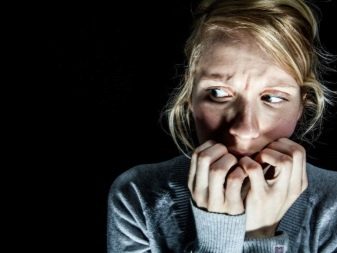

Psychiatrists, talking about phobia, mean pathological manifestation of the reaction of fear to stimuli. It is believed that coping with phobias is much easier at the initial stage. Long, complex and neglected nightmares are rarely completely cured. Psychoanalysts mean phobia a condition of obsessive neurosis, in which an anxious state begins to actually control the behavior and thinking of the patient.
Not every fear can be considered a diagnosis. Mental disorder is spoken only if if persistent irrational horror is present for more than six months, and its manifestations significantly limit the life of a person.
The psychiatric encyclopedic dictionary compiled by a group of authors (Y. A. Stoimenov, M. Y. Stoimenova, P. Y. Koyeva and others) has several dozen phobias classified alphabetically. For greater convenience, we shared these fears by topic.

Health and space limitations
The list of these fears is very impressive, because to one degree or another all people worry about their health and being in space. Here are the main fears that relate to health status, as well as spatial phobias.
Ablutophobia - This is a fear of washing, bathing, cleaning, washing. At the same time, a person may not be afraid of open reservoirs, but any hygienic procedures are extremely unpleasant for him, and sometimes even cause permanent rejection.
- Agirophobia (dromophobia) - the horror of the streets. Some are frightened by the prospect of crossing a wide street with a mass of cars, while others are pathologically afraid of narrow and quiet village streets.
- Agoraphobia - fear of open spaces, squares, crowds of people. In severe form, it can be manifested by a complete refusal to leave the borders of your apartment.
- Eichmophobia - pathological irrational horror of sharp objects, knives, fear of injury. Eichmophobes usually try to avoid kitchen sharp objects to the extent that they refuse to cook by buying semi-finished products, and in 90% of cases they are afraid to cut their nails.
- Acliophobia - A rare disorder, accompanied by an unjustified fear of deafening. People with such a phobia avoid loud sounds, try to be very careful about ear health.
If they hear the sound of an explosion or another sudden loud sound, they may experience a strong sense of panic.
- Acnephobia - A strong fear of acne, acne. Often accompanied by obsessive-compulsive disorder, in which a person always tries to wipe his hands and face with clean wipes.
- Apopathophobia - Inexplicable fear of going to the toilet. Some show only fear of going to public toilets, while others (rarely) have private latrines.
- Apoplexyphobia - fear of stroke. It is noteworthy that phobia is mainly affected by young and healthy people who have minimal risk of cerebral hemorrhage. It develops most often in people who have seen the effects of strokes in relatives, friends.
- Ataxiophobia - pathological strong horror from the prospect of losing balance and the ability to coordinate their movements. Often found in professional athletes, circus artists, in people whose professional activities are associated with the need to maintain balance.
Often ataxiophobia cannot take alcohol in any quantity for fear of losing balance.
- Automisophobia (misophobia) - fear of pollution of one’s body, one’s skin, fear of being dirty and becoming infected with dangerous diseases. This fear is usually closely associated with depression. In a severe form of the disorder, a person restricts tactile contacts with people and objects to a minimum or tries not to touch anything at all.
- Aerophobia - fear of moving on aircraft, being in the cabin, as well as fear of a draft. A very common type of fear, in severe form, may manifest itself in a complete rejection of air transport.
- Aeroemphysophobia - An unexplained fear of developing caisson disease. Often found among professional divers, divers, pilots, astronauts. But anyone can develop and even the understanding that decompression in ordinary life does not threaten anyone, cannot guarantee the absence of the development of a corresponding nightmare.
Basophobia - fear of walking without support. It can manifest itself in a fright in the absence of a railing, handrails, as well as the hands of a friend, comrade, partner, or close. People with this disorder are calm only if they have physical support when moving (at least a cane or walkers).
At the same time, there are no objective reasons for fear - the legs and joints, the spine and the muscular corset of the basiophobe are completely healthy.
Bacteriophobia (Bacillophobia) - This is a strong fear of germs, bacteria, fear of becoming a victim of bacterial infection. Manifested by the obsession to create a sterile space around. Panic attacks can occur at any time when a foreign object, person, etc., enters the familiar habitat, since they can be sources of pathogens.
- Blutophobia - fear of harming, injuring someone or something. Often develops against a background of depression. Blaptophobes are indecisive, they are restless that their actions can be dangerous for others, and this anxiety can be manifested by tremors, hysteria, cramps, spasms of the respiratory muscles and heart palpitations.
- Bromhydrophobia - fear that others will notice the smell of sweat or body odor. The disease is also called an illness of excess purity. Often this form of fear is found in people with extremely low self-esteem. The fact of one's own sweating causes panic, there is a need to immediately get into the shower or at least use a deodorant. Bromhydrophobes often abuse perfume.
- Vaccinophobia - fear of vaccinations and possible complications from them. A relatively young phobia, which was included in the list of fears relatively recently. It can be manifested either by fear only of a certain type of vaccine, for example, of “live” vaccines, and it can be associated with all drugs without exception for preventive vaccinations.
Venereophobia - fear of contracting a sexually transmitted disease. It can manifest itself in fear of unprotected intercourse even with a regular partner, or it can manifest in confidence that the disease already exists, while most venereophobes are afraid to see a doctor - they are hyper-shy.
With the early development of the violation, a person can refuse intimate relationships at all, considering them a threat to his own life.
Verminophobia - fear of small worms, parasites, germs, infection. A fairly extensive list of fears on which manufacturers of antibacterial soap and sterile household wipes make good money. There are even special computer keyboards for verminophobes. The fear of infection and death is usually based on the negative experience of the past (in childhood, a person has had an infection and is now afraid of recurrence).
Vertigophobia (dinophobia) - fear of dizziness and loss of balance.Often it develops in people who really have problems with the health of the heart, blood vessels, vestibular apparatus, and auditory nerve. At the same time, a person perceives the resulting dizziness as signs of a dangerous disease and begins to fear the symptoms themselves.
Halitophobia - fear of bad breath. The man is very afraid that others will find his breath fetid. There is not always the slightest reason for such fears. Fear quickly turns into an anxiety disorder, into a neurosis of obsessive states, in which a person constantly, as if wound up, performs the same program of actions aimed at refreshing his breath and checking its freshness.
- Hemophobia (Hematophobia) - fear of blood (one's own or another's). Most often develops after injuries or medical intervention associated with blood loss in childhood. At the same time, the event itself can be safely forgotten over the limitation of years, but fear is densely imprinted in the subconscious. It manifests itself acutely, sharply - nausea, dizziness, tremors, an obsessive smell of blood, tinnitus, loss of consciousness can occur.
More characteristic of women than men.
- Hydrosophobia - fear of sweating. Usually a person is afraid to sweat for two reasons - either out of fear of catching a cold, or out of fear of starting to smell badly, which others will notice. Hydrosophobes are usually very worried when they see other sweating people, and therefore usually they try not to attend gyms, stadiums, bathhouses.
Gymnophobia - fear of nudity. Patients fear that someone will see them naked. In some cases, alien nudity is also alarming, and therefore its anthemophobes also try to avoid it. Most often, the violation is associated with negative experiences experienced in childhood, as well as low self-esteem, when a person considers his body to be shameful, ugly.
Dentophobia - fear of dentists, dentists. According to experts, every third inhabitant of the planet suffers from this kind of fear. Dentophobes go to the dentist only as a last resort, and therefore they usually have problems with dental health.
Dermatopathophobia - fear of contracting skin ailments. Fear of the prospect of becoming a dermatologist patient makes a person more often use soap, detergents and disinfectants. And it is their frequent use that causes skin problems, which increases a person’s panic. It turns out a vicious circle, which can be difficult to get out of.
Iatrophobia (iatrophobia) - fear of doctors, nurses, orderlies and everyone who wears a white coat. It can manifest itself in the form of a refusal to visit a clinic, to take tests.
In severe cases, a person generally refuses any treatment, including the necessary for his vital signs.
Iophobia - fear of poison, fear of being poisoned. A person may be afraid not only of food poisoning or drugs, but also of poisons that can get on the skin and under it with insect bites when shaking hands. The food preferences of the jophobe are usually scarce - he eats only limited groups of products, he cannot be fed anything outside the house if he does not know who and what he prepared the treat from. At home, a person with such a disorder can always have an impressive collection of insecticides. People may feel signs of poisoning regularly.
- Carcinophobia - fear of getting cancer, cancer. Most often develops in people aged 40+. The reasons may lie in the example of relatives, and in the idea of the danger and incurability of cancer in general. Often the fear of death and torment from an oncological disease develops against the background of an existing depression, as well as with other mental pathologies.
- Cardiopathophobia - fear of heart disease, seizures. More often develops in people whose family has had deaths from heart disease.It is also believed that the likelihood of developing such a fear increases with age. To a greater extent, pensioners who often visit doctors and pass tests are exposed to it.
Kenophobia - fear of large empty spaces, halls of cinemas, theaters, foyers and halls. At the same time, fear is caused not so much by large spaces, but by the fact that they are not filled with anything, and therefore the brain of a kenophobe instantly “draws on” the very different dangers that can lie in a large hall.
Fear is manifested by panic attacks and attacks.
Claustrophobia - pathological fear of confined space and the prospect of being in a dense crowd. Claustrophobes leave the doors open, avoid moving on the elevator, are often afraid of train cars and airplane cabins.
Menopause - fear of stairs, the need to walk on them. At the same time, the staircase itself and the process of walking along it can cause horror. The causes of the pathological condition are not obvious, they are still not completely clear to medicine. The disorder is rare.
Copophobia - fear of overwork. Often it develops in adults and in men and women who have quite taken place in life, who have heard about the dangers of overwork or themselves experienced the effects of chronic fatigue. The disorder manifests itself atypically for phobias - a person does not try to avoid business and responsibility, and even vice versa - he tries to load himself more. And the more he takes on himself, the stronger the level of anxiety and anxiety about possible fatigue.
- Coprophobia - fear of feces. Not only the appearance of feces (friends, strangers, dogs, etc.), but also a conversation about bowel movements, and sometimes even advertising of laxatives can cause an attack of panic fear and disgust. A person’s hands and lips begin to tremble, dizziness appears, he may lose consciousness.
In severe cases, coprofob may refuse to empty the intestines, which leads to obstruction and requires urgent surgical treatment.
Lalophobia - fear of talking when stuttering. Caused by fear of becoming a laughing stock in the eyes of others. It occurs not only in people with stuttering, but also in those who have never stuttered, but are very afraid that it is they who may experience a sudden and inexplicable stutter.
- Maniophobia - fear of becoming mentally unhealthy. Maniophobia is literally haunted by the obsession that they will one day go crazy, and therefore they regularly find symptoms of a wide variety of mental disorders. The “trap” is that with the progression of a phobia, a person really goes crazy. Therefore, the condition necessarily needs treatment, otherwise it is a stone's throw to real madness.
- Menophobia - fear of menstruation. It can be combined with hemophobia (fear of blood), or it can be an isolated fear, for example, a woman is afraid of discomfort during menstruation.
Misophobia (hermophobia) - fear of contracting infections. Misophobes are afraid to touch foreign objects, to contact people who do not inspire confidence in them. They often avoid public transportation, public baths, and any places where they could theoretically become infected with any infectious disease.
Nosophobia - fear of getting sick. This concept includes numerous fears of specific diseases (lysophobia - fear of schizophrenia, lephrophobia - fear of leprosy, speedophobia - fear of HIV infection, etc.), as well as a general fear of getting sick with something. Such people are anxious about their health, hygiene, nutrition, read a lot of information about the symptoms of diseases, and even find the lion's share of them themselves.
The classic nosophobe is a regular in the clinic, it always seems to him that he is sick, but the doctors are simply not well trained to recognize his ailment.
- Nosocomophobia - pathological fear of hospitals, hospitals, hospitals.People with such a disorder, on the contrary, cannot be lured into the hospital, which is dangerous in itself, because in the absence of diagnosis and timely detection of many diseases, a person is in serious danger. Most often manifested in childhood. In adults, it has a severe course.
- Onanophobia - horror of the possible consequences of masturbation. It develops more often in adolescents, can have a severe course, in which a person generally refuses to build his full intimate life. Usually associated with scary tales of the dangers of masturbation (often not true), which adults scare teenagers. More often than not, boys suffer from this form of fear.
Patroyophobia - fear of hereditary diseases. It usually develops in those who actually have patients in the family, as well as people who have very difficult relationships with their relatives: they begin to fear that they will also show negative traits and that their relationships with their own children will also be difficult. If untreated, fear can turn into paranoid disorder.
- Parurez - fear of urination in humans. A separate disease and disorder is not considered, but often accompanies a variety of disturbing social phobias. More common in men.
- Peladophobia - fear of baldness. It can develop in both men and women. It manifests itself in the fact that people are beginning to quickly avoid contacts with bald people, since in their presence they begin to experience strong excitement.
Any hints of baldness as a phenomenon cause rapid breathing, loss of self-control.
Pettophobia - fear of accidentally farting in public. Fear can reach such a strength that a person stops visiting public places, is afraid to queue in the store, because uncontrolled emission of intestinal gases, according to the pettophobe, can occur at any time.
- Tocophobia - fear of childbirth. Most often, women are tocophobia, but there are also representatives of the stronger sex who suffer from attacks of fear and panic when mentioning pregnancy and childbirth. Fear can be multifaceted - this is the fear of not becoming a good parent, and the fear of pain in childbirth, and the negative experience of abortion in the past, and even the fear of losing a good figure after childbirth. In severe form, fear of childbirth makes a woman voluntarily refuse to continue the birth.
- Topophobia - fear of staying in some room alone. We are talking about a particular room or type of premises (basements, attics, storerooms) or about all rooms without exception (rarely). It is very important for such a person that someone should be with him constantly, even if it is a cat or a dog.
- Traumatophobia - fear of injury. Occurs with a hypertrophied instinct of self-preservation. Traumatophobes in the past often suffered injuries, usually this happens in childhood. The disorder manifests itself in increased caution, in the use of personal protective equipment, even in circumstances in which this seems inappropriate.
- Tremophobia - fear of trembling, tremors. It is often a symptom of other phobic disorders when hands or lips begin to tremble in a state of excitement in a person.
Trying to hide fear, a person worries more, which invariably leads to increased trembling.
- Trypanophobia - fear of injections, needles, syringes, piercings, etc. Any punctures on the body (even as a possible event) cause severe anxiety in trypanophobia, deprive him of rest and sleep, in severe form, the disorder may be accompanied by a complete refusal to take tests, treatment .
- Tuberculophobia (phthisiophobia) - fear of contracting tuberculosis. It usually develops in impressionable people after becoming familiar with the symptoms and routes of transmission of this dangerous disease.They refuse to shake hands, try to avoid being in the same room with those who cough (regardless of the causes of the cough), often wash their hands, make themselves inhalations at home. In severe form, they avoid communication with strangers and try not to take door handles anywhere.
- Tunnephobia - fear to overcome the tunnel. It is a form of spatial phobia. It can manifest itself both in a complete refusal to get into any tunnels, and in a refusal to overcome them alone, without accompanying persons.
- Pharmacophobia - fear of taking medications. Often bordered by fear of doctors, with fears of possible poisoning. Sometimes it develops as a long-term memory for side effects from taking medications in childhood, but it can be a consequence of negative information from the outside (reports of fake medicines, dangerous falsifications, etc.).
Phthirophobia - fear of lice, lice. A person is so afraid of contracting head lice that he tries to avoid everyone who not only scratches his head, but also touches his hair. Often, phthyriophobes complain of itching of the scalp, taking it for the symptoms of lice, but the real danger is the attempt to independently use various chemicals and insecticides, with which people suffering from such a disorder try to get rid of a non-existent problem.
- Emetophobia - fear of vomiting. One of the most poorly understood phobias, although about half the people on the planet suffer from it. It can be manifested by the fear of own vomiting in people, as well as by the fear that a person may experience when contemplating someone else's vomiting.
- Epistaxophobia - fear of nosebleeds. It is really impossible to control a condition such as epistaxis (epistaxis). And if a person is prone to frequent nosebleeds, then such a phobia may develop.
Fear of blood from the nose is rarely manifested in the absence of causes and prerequisites for such bleeding.
- Erythrophobia - fear of blushing. Some people blush when they lie, some - during times of great excitement. Erythrophobic is afraid that redness for any reason will catch him at the wrong time in the wrong circumstances, when he will be in public.
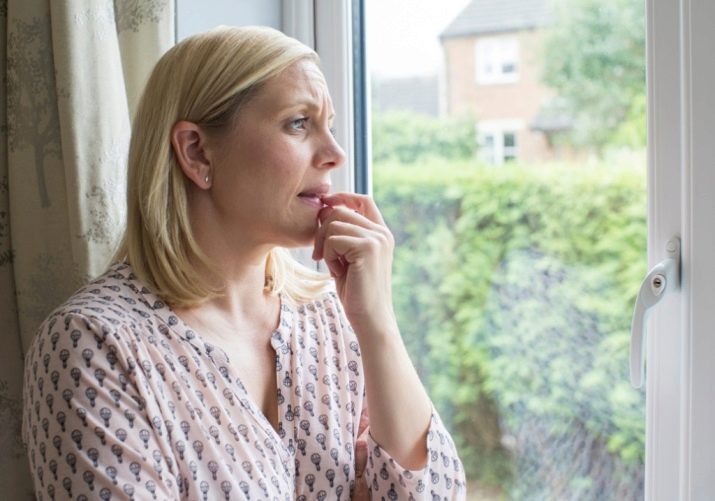
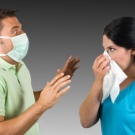


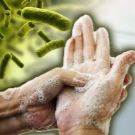
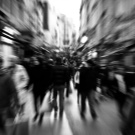
Natural phenomena, flora and fauna
Fears of natural phenomena and representatives of the animal and plant worlds are one of the most ancient. They were formed at the dawn of mankind and will remain for a long time as manifestations of the instinct of self-preservation. But for some, these fears go beyond the rational and lead to a loss of self-control every time a person is faced with what he fears.
Such fears do not always arise as a result of negative personal experience. Often the reason lies in the centuries-old “memory of the ancestors”. Such fears are often inherited. Here is a list of the most common phobias of this type:
- aylurophobia (felinophobia) - fear of cats;
- acarophobia - pathological horror of ticks and their bites;
- anemophobia - fear of the storm, possible natural destruction;
- anthophobia - fear of flowers (both wild and in pots);
- apiphobia - fear of bees, wasps and their bites;
- arachnophobia - fear of spiders;
- astrophobia - fear of stars, starry sky, starry space;
- brontophobia - fear of peals of thunder;
- galeophobia - pathological fear of sharks;
- heliophobia - fear of being in the open sun;
- herpetophobia - fear of snakes and reptiles;
- gilophobia - fear of being lost in the forest;
- zoophobia - fear of animals in the broad sense of the word (many of the terms listed in the list are varieties of zoophobia, its special cases);
- zemmiphobia - fear of moles;
- insectophobia (entomophobia) - fear of insects;
- keraunophobia - fear of lightning flashes;
- kinophobia - pathological fear of dogs of any size and breed;
- myrmecophobia - fear of ants;
- musophobia (or surephobia) - fear of mice, rats, other rodents;
- necophobia - fear of night time, darkness.
- ombrophobia - fear of getting wet in the rain;
- ornithophobia - fear of birds and their feathers;
- pyrophobia - fear of fire;
- psychophobia - fear of the cold;
- radiophobia - fear of radiation;
- ranidophobia - fear of frogs;
- thalassophobia - fear of the sea (the reservoir itself and the bathing process in it);
- uranophobia - fear of looking into the sky;
- chiropophobia - fear of bats;
- equinophobia - fear of horses.



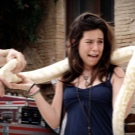
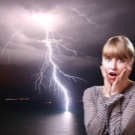

Human interaction and age-related fears
Social fears take pride of place in prevalence. They are usually associated with the need to build social contacts, as well as age-related changes in the psyche. These include:
- agraphobia - fear of sexual harassment;
- androphobia - pathological fear of men;
- anthropophobia - fear of the company of people;
- autoobia - fear of loneliness;
- gamophobia - fear of marriage;
- haptophobia - fear of other people's touches, the need to touch someone;
- gelotophobia - unreasonable strong fear of becoming an object of ridicule;
- genophobia (coitophobia) - fear of sex;
- gerontophobia - fear of old age;
- heterophobia - unreasonable fear of members of the opposite sex;
- gynophobia - pathological fear of women;
- gravidophobia - a rare horror of pregnant women, fear of the prospect of meeting a pregnant woman;
- demophobia (okhlofobiya) - horror before a gathering of people, a crowd, a bunch;
- logoophobia - a strong irrational fear of the conversation process in the presence of other people;
- paralyphophobia - fear that any erroneous action of a person can harm his family, friends, people dear to him;
- pediophobia - irrational horror of children;
- scophophobia - fear that other people will look at you;
- social phobia - fear of society, public condemnation, failure;
- transphobia - pathological fear of transgender people, acute rejection of signs of transsexuality;
- phylophobia - fear of falling in love, experiencing a feeling of cordial affection for someone;
- ephebiphobia - pathological fear of adolescents.


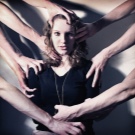

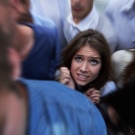
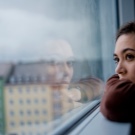
Food
Such phobias are common mental disorders, they, according to statistics, affect up to 12% of the population in a more or less pronounced degree. Here are some of these phobias:
- wine phobia - pathological fear of drinking wine (and sometimes other alcoholic beverages);
- sitophobia – fear of eating in general;
- trichophobia - horror of hair that has got into food;
- phagophobia - fear of swallowing food, choking during swallowing;
- hemophobia - fear of possible chemical additives in food.

Mystical
This group of phobias affects both men and women, and children. Everything that has a mystical color at all times was perceived as something terrible, but sometimes fears become strong, irrational and turn into a phobia. Here are a few such fears:
- arithmophobia - fear of a certain number, which has a certain mystical meaning for a particular person;
- hierophobia - panic fear of objects related to any religious cult;
- hexacosiohexecontaghexaphobia - fear in front of the "devilish" number 666;
- demonophobia (satanophobia) - fear of demons, the devil;
- parasquedecathriaphobia (triskaidecaphobia) - fear of the number 13;
- spectrophobia - pathological fright before spirits, ghosts, ghosts;
- theophobia - fear of God, his possible interference in the affairs of man, divine punishment;
- coulrophobia - fear of the image of a clown.

Atypical
There are fears that conditionally distinguish into an atypical group. This means only that they are rare enough, and the causes of such phobic disorders are usually not established:
- acriophobia - fear not to understand the meaning of the information read;
- hippopotomonstrosescipedalophobia - obsessive horror from long words;
- dorophobia - panic fear of giving gifts and receiving presents from others;
- dextraphobia - obsessive fear of all objects located at the current time to the right of the person;
- decidophobia - Fright before making a decision;
- imohyphobia - a panic that you will be misunderstood when you use emoticons in correspondence;
- retterophobia - fear of making a mistake in spelling a word, not noticing the auto-replace function;
- self-phobia - fear of unsuccessful selfies, which will cause condemnation of others;
- hyrophobia - inexplicable horror is inappropriate to laugh in an environment that does not predispose to this, for example, at a funeral;
- chronophobia - the horror of time, its course.
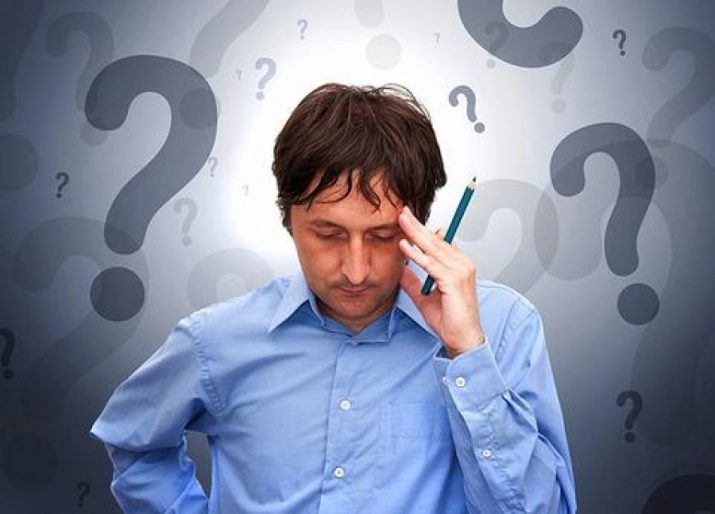
Top 10 most common fears
Nictophobia - fear of the dark, night time. This is the most common fear of the modern world and it is found in people of different ages, sex, level of education and social status. Up to 80% of children suffer from nymphophobia, while in adults the prevalence of phobia is about 9-10%.
Acrophobia - panic fear of heights. It affects up to 8% of the world's inhabitants. Any stay at a height, flight, the need to look out the window from the upper floors give rise to a strong unaccountable fear of falling. And the fall is quite possible, because at the time of a panic attack, a person really loses the opportunity to control himself and his actions.
- Aerophobia - fear of traveling by air, flying by plane. Up to 7% of people suffer from this disorder. May be accompanied by additional fear, for example, thanatophobia (fear of death).
- Claustrophobia - fear of confined space. It occurs in 5-6% of people to one degree or another. Patients try to avoid trips in the elevator, do not close doors, windows. Some people can even cause a panic attack by a tight tie or shower.
- Aquaphobia is the fear of water. It occurs in 50% of people who survived tragedies on the water, disasters, floods, etc. Without preliminary predisposing causes, it occurs in 3% of people on Earth.
- Ophidiophobia - horror of snakes. Pathological fear of snakes occurs in 3% of people. Some are afraid only at the moment of contemplation of the reptile, some are able to “invent” it and suffer from the obsessive thought that in their home at the moment there may well be a snake.
- Hematophobia - Fear of blood in its pathological version occurs in 2% of the world's inhabitants. In almost half the cases, fearful bloody films seen in childhood, as well as sloppy manipulations of health workers, are guilty of the development of fear.
- Thanatophobia - the horror of their own death and the death of others. Usually found in religious people, after a not-so-successful period of a midlife crisis. In children it is rare.
- Glossophobia - pathological fear of public speaking. It happens in mild form in 90% of the inhabitants of the planet, but in the form of the disease passes in 3%.
Iremophobia - fear of deep silence. It may be accompanied by sound hallucinations, a feeling of irrational fear, a desire to escape. It occurs in about 1.5-2% of earthlings, most often in residents of large cities, accustomed to noise even at night.
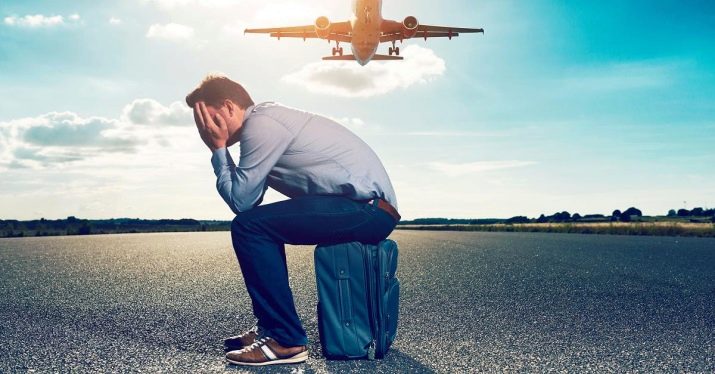

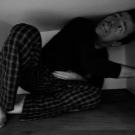



List of funny phobias
- Gnosiophobia - pathological fear of obtaining knowledge. Usually residents of megacities, as well as children who grew up in uneducated tribes, and Mowgli children suffer from such a phobia.
- Kumpunofobiya - fear of buttons.A very rare phobia, which occurs in only one case per 70 thousand people. It manifests itself in the fact that a person carefully avoids such accessories on clothes.
- Penteraphobia - mother-in-law's pathological fear. No matter how anecdotal it may sound, there are men who really can not communicate with mother-in-law without mortal horror in the soul and panic in the eyes. Exactly the same term refers to the mother-in-law fear in women.
- Pogonophobia - fear of the beard. It is manifested in the fact that the pogonophobe carefully avoids any contact with those who have a long beard. If communication cannot be avoided, it provokes a panic attack.
- Papaphobia - pathological fear of the Pope. In total, there are only a few cases of unbearable human horror at the mention of the name of the Pope, but they were noticed and were included in the official list of phobias.
- Lacanophobia - fear of vegetables. One type of cucumber or zucchini is capable of causing a horror attack, panic and dizziness in a lacanophobe. Typically, the smell of vegetables for such people is unbearable.
- Nenophobia - fear of the clouds. They change shape, are in motion, and this fact itself causes anxiety among the non-phobia.
- Omphalophobia - fear of the navel. Omphalophobes are afraid of the navel - their own, a stranger, never allow anyone to touch this part of the body and they themselves try not to touch the navel and not look at it.






What are celebrities afraid of?
- Peter the Great (Great) suffered from entomophobia - was afraid of many insects, and especially cockroaches. He made him regularly check his chambers for insects before he was supposed to go there. This fact is widely reflected in the memoirs of his contemporaries.
- Franklin Roosevelt panicky afraid of fire, suffered from pyrophobia since childhood, when in 1899 he witnessed a terrible fire. At night, Roosevelt always left the door open, and the duties of the Secret Service included regular fire safety checks at his residence.
- Fearless conquering warrior Genghis Khan suffered from kinophobia - he was afraid of dogs. As a child, he witnessed how a Mongol wolfhound tore a man in the steppe.
- Psychoanalyst Dr. Sigmund Freud suffered from agoraphobia, was afraid of weapons and ferns. Fear of open spaces prevented the elderly Freud from taking walks unaccompanied by students.
- North Korean leader Kim Jong Il was afraid to fly. His aerophobia was so strong that in his political trips he always chose exclusively ground transportation.
- Claustrophobia suffers Hollywood actress Uma Thurman. On the set of "Kill Bill-2," she decided to star in a scene where she is buried alive, which she regretted - the horror was so intense that Uma later needed the help of a psychotherapist to continue working on the film.
- The most famous sociophobe of our time - mathematician Grigory Perelman. He does not leave home, refuses to participate in conferences, does not give interviews, and also refused to come to Paris and receive a well-deserved bonus of 1 million euros.
- Emperor Octavian Augustus panicky afraid of a thunderstorm. He even built the temple of Jupiter the Thunderer to appease the gods, but the fear did not go away.
- Hitler was afraid of dentists, Napoleon - of cats and white horses.
On how to deal with phobias and fears, see further.
